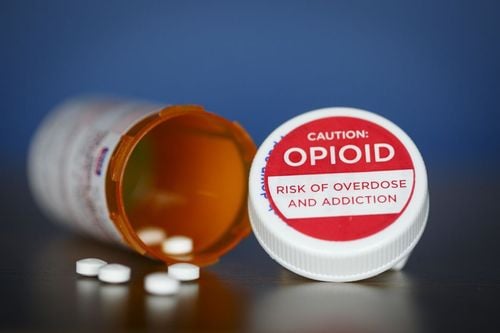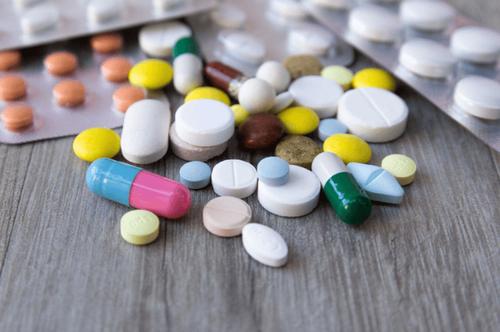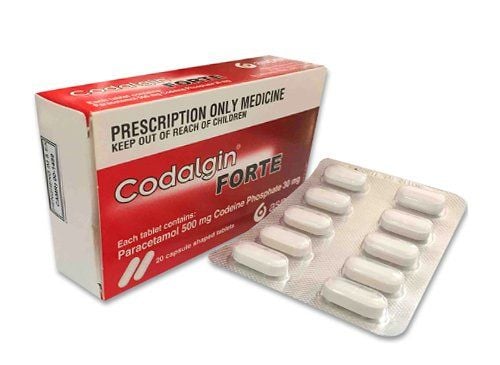This is an automatically translated article.
Pethidine drug, also known as Pethidine hydrochloride, is indicated in the treatment of moderate to severe pain, adjuvant in major surgery and analgesia after surgery, analgesia in obstetrics. So what does Pethidine do?
1. Uses of Pethidine
What is Pethidine? Pethidine, also known as Pethidine hydrogen, belongs to the category of synthetic opioid pain relievers. The drug is used in the relief of moderate to severe pain, adjuvant in cases of major surgery, analgesia after surgery and analgesia in obstetrics. In addition, the drug Pethidine in cases of severe pain not tolerated by non-narcotic analgesics, renal and ureteral colic, cardiac asthma and pulmonary edema due to acute left ventricular failure, pain due to tumor tolerable with mild analgesics.
In addition, some other effects of the drug are not listed on the approved drug label, but in some cases the doctor may prescribe the use of Pethidine. Therefore, before taking the medicine, consult your doctor.
2. How to use Pethidine?
What does Pethidine do? Pethidine medicine is prepared in many different forms:
Tablets with content of 50mg and 100mg Injectable solution contains 100mg/ml, 75mg/ml, 50mg/ml, 25mg/ml Oral solution 50mg/ml, 10mg/ ml How to use oral solution with half a glass of water because undiluted solution can cause numbness of the oral mucosa. If you have to take the drug many times, it should be replaced with a deep intramuscular injection into the buttock muscle. Avoid subcutaneous injection because it causes pain and hardening of the skin at the injection site. For intravenous administration, it is necessary to reduce the dose, inject slowly, preferably diluted before injection, the patient must be lying down and ready to take a backup of naloxone, oxygen and other means of respiratory support. In addition, when used concomitantly with other CNS depressants such as phenothiazines, the dose of Pethidine should be reduced (25-50% of the usual dose).
Dosage will depend on the age of the patient for severe, severe and acute pain:
Adults take 50-150mg every 4 hours. The oral dose of Pethidine is half as effective as the parenteral dose. For children the dosage is from 0.5-2mg/kg. Subcutaneous and intramuscular injection, adult dose from 25-100mg and repeat after 4 hours. For children, 0.5-2mg/kg intramuscularly. For the elderly, the oral dose is the same as the adult dose. Administer intravenously slowly, adults take a dose of 25-50mg and repeat after 4 hours. Use Pethidine exactly as directed by your doctor, do not use more, smaller or longer than prescribed. Use Pethidine regularly to get the most benefit from it and you can stop taking it if any new signs of abnormality appear or the condition does not improve after 7 days. Absolutely do not abuse the drug for too long for a long time. This does not make the patient's condition better, but also increases the risk of unwanted effects.
3. Undesirable effects when using Pethidine drug
Pethidine can cause some unwanted and common side effects, such as:
Nausea, vomiting in the early stages Constipation, drowsiness Dry mouth Loss of appetite Urinary and biliary tract spasms Slow or fast heartbeat Palpitations Excited Rash, rash Sweating Headaches Face flushing Dizziness Postural drop in blood pressure Hypothermia Hallucinations Confusion Addiction Constriction of pupils High doses can cause respiratory failure and lower blood pressure Overdose can cause convulsions Before prescribing a drug, a doctor always considers the benefits and effectiveness of Pethidine. When using Pethidine can still occur unwanted effects. Therefore, when unusual symptoms appear, especially when a severe allergic reaction occurs with accompanying signs such as severe dizziness, difficulty breathing, rash, swelling or itching of the face or neck area throat, tongue,... In this case, the patient should immediately notify the doctor or nurse for immediate medical intervention.
4. Some notes when using Pethidine
Some notes when using Pethidine include:
Report a history of allergy to Pethidine or any other allergies. Pethidine may contain inactive ingredients and could cause an allergic reaction or other serious problems. Report any medications you are taking including prescription and nonprescription drugs, herbs and supplements, foods, dyes or preservatives. The use of Pethidine is contraindicated in patients with a history of hypersensitivity to any of its ingredients. The use of Pethidine is contraindicated in cases of severe kidney damage, acute respiratory failure, chronic pain, alcoholism, acute abdominal pain, increased intracranial pressure (with respiratory failure and pupil failure to respond to neurological examination); When there is a risk of intestinal obstruction due to paralytic ileus, avoid injection in the presence of pheochromocytoma (risk of histamine-releasing hypertension). Patients who are taking or have stopped using an MAO inhibitor, but for less than 14 days. Use with caution in severe chronic pain, liver damage, or renal failure, reduce dose or avoid use in the elderly and neonates, the debilitated and drug addicts (such as severe withdrawal if stopping use). sudden medication), decreased thyroid function, asthma and chronic obstructive pulmonary disease, seizures, enlarged prostate, decreased blood pressure. Women who are pregnant or planning to become pregnant and breast-feeding should consult their doctor before using this medicine. However, Pethidine is widely used to relieve pain during labor, it rapidly crosses the placenta and, like other analgesics, has opiate-like properties and can cause respiratory distress in the newborn. birth, although less so than morphine. Newborns can metabolize Pethidine but slower than adults, so it is necessary to use Pethidine medicine correctly to avoid drug addiction for both mother and baby. To avoid drug addiction and addiction, it is necessary to use Pethidine at the lowest effective dose and as sparingly as possible. It is necessary to reduce the dose by 25-50% compared to the dose of Pethidine when other CNS depressants are used concomitantly. If you forget to take a dose of Pethidine, take it again as soon as possible. However, if it is close to the time of your next dose, skip the missed dose and continue taking or injecting the medicine as scheduled. Do not apply more drug than the treatment regimen. Using an overdose of Pethidine or swallowing it can cause serious symptoms such as nausea, vomiting, abdominal pain, shortness of breath, fainting,...
5. Drug interactions
Drug interactions can reduce the effect of Pethidine, or increase the effect of unwanted effects. Tell your doctor about all other medicines you are taking including over-the-counter medicines, vitamins, prescription drugs, and herbal products. Do not start, stop or change the dose of any medicine without your doctor's consent.
Very serious reactions such as severe respiratory depression, coma and cyanosis, hypotension may occur in patients receiving monoamine oxidase inhibitors thought to be co-administered with Pethidine. In addition, there have also been reports of convulsions, increased euphoria, tachycardia, increased blood pressure and high fever. Pethidine should not be used concurrently in patients taking monoamine oxidase inhibitors or within 14 days of discontinuation of the drug.
Opioid-like analgesics and barbiturates may have additive inhibitory effects on the central nervous system. The long-term sedation of Pethidine with phenobarbital is due to the demethylation of Pethidine, leading to increased formation of the neurotoxic metabolite norPethidin. Phenytoin increases the metabolism of Pethidine in the liver, the use of the drug reduces the half-life and bioavailability of Pethidine in healthy subjects, the concentration of norPethidin in the blood increases. In addition, cimetidine inhibits the metabolism of pethidine in the liver leading to impaired respiratory function and sedation.
6. How to store Pethidine?
Store Pethidine at room temperature, away from light and away from moisture. Do not store Pethidine in a humid place or in the freezer and keep away from heat and open flames. Different medicines will have different storage methods, so read the instructions for storing Pethidine on the packaging carefully, or ask your pharmacist. Keep Pethidine out of the reach of children and family pets. When the medicine has expired or is damaged and cannot be used anymore, dispose of it and dispose of it properly. Do not arbitrarily dispose of Pethidine into the environment such as water pipes or toilets unless requested. Please consult your waste management company or pharmacist for advice on how to safely dispose of Pethidine to help protect the environment.
In summary, Pethidine belongs to the category of synthetic opioid analgesics. The drug is used in the relief of moderate to severe pain, adjuvant in cases of major surgery, analgesia after surgery and analgesia in obstetrics. In addition, the drug Pethidine in cases of severe pain not tolerated by non-narcotic analgesics, renal and ureteral colic, cardiac asthma and pulmonary edema due to acute left ventricular failure, pain due to tumor tolerable with mild analgesics. However, Pethidine can cause some unwanted effects and drug interactions, so tell your doctor what medicines you are taking to reduce the risk of unwanted effects and at the same time increase effective for treatment.
Follow Vinmec International General Hospital website to get more health, nutrition and beauty information to protect the health of yourself and your loved ones in your family.
Please dial HOTLINE for more information or register for an appointment HERE. Download MyVinmec app to make appointments faster and to manage your bookings easily.













